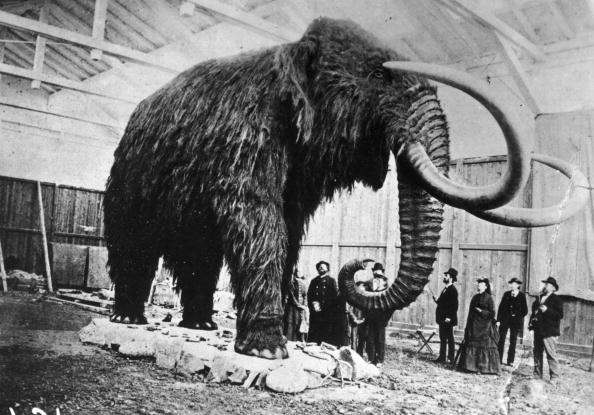Genome Explains Woolly Mammoth Mechanism In Enduring Arctic Conditions
| Cecille Marie Gumban | | Jul 05, 2015 03:29 PM EDT |
(Photo : Getty Images/ Hulton Archive) Mammuthus primegenius, more popularly known as the woolly mammoth, has spent its entire life living in extreme Arctic conditions.
Mammuthus primegenius, more popularly known as the woolly mammoth, has spent its entire live living in extreme Arctic conditions. And because of its capability to adapt to the arctic environment, scientists have been studying this mammal in an effort to better understand what genetic changes differentiate it from the living elephants today.
Like Us on Facebook
According to Science Recorder, through genomic analysis, scientists have identified some 1.4 million distinctive genetic variants seen only in Woolly Mammoths.
A study published on Thursday in the journal Cell revealed that researchers compared the genomes of two mammoths whose remains were found in permafrost in northeastern Siberia, one 18,500 years old and the other 60,000 years old, with genomes of three Asian elephants and one African elephant.
Dr. Vincent Lynch, study author and assistant professor of human genetics at the University of Chicago, said, "This is by far the most comprehensive study to look at the genetic changes that make a woolly mammoth a woolly mammoth."
He added, "They are an excellent model to understand how morphological evolution works, because mammoths are so closely related to living elephants, which have non of the traits they had."
What makes these mammoths differerent from elephants is, They possessed genetic changes that are associated with their skin and hair development, fat biology, insulin biology and temperature tolerance. All these variants would have helped the mammoths to adapt to their environment, according to Engadget.
Lynch said, "We think that these changes make sense in mammoths because we know that mammoth evolved long, thick hair, large fat deposits and lived in really cold places,and insulin signaling is important for fat biology because insulin regulates how much sugar in the blood is converted to energy and fat."
In a lab experiment, researchers used ancestral sequence reconstruction techniques to 'resurrect' a mammoth version of a gene called TRPV3 by transplanting it to human cells, the mammoth gene TRPV3 manufactured a protein that has a lower response to heat than the version found in ancient elephants, Reuters has learned.
Lynch believes that scientists will eventually have the ability to recreate a woolly mammoth from its genome. But Lynch stated a question: "If you're technically able to do something, should you do it?"
He then went on to say, "Mammoths are extinct and the environment in which they lived has changed, there are many animals on the edge of extinction that we should be helping instead." He said personally that he is opposed to the thought of resurrecting the mammoth.
Tagswoolly mammoth, genome, Science, Study
©2015 Chinatopix All rights reserved. Do not reproduce without permission
EDITOR'S PICKS
-

Did the Trump administration just announce plans for a trade war with ‘hostile’ China and Russia?
-

US Senate passes Taiwan travel bill slammed by China
-

As Yan Sihong’s family grieves, here are other Chinese students who went missing abroad. Some have never been found
-

Beijing blasts Western critics who ‘smear China’ with the term sharp power
-

China Envoy Seeks to Defuse Tensions With U.S. as a Trade War Brews
-

Singapore's Deputy PM Provides Bitcoin Vote of Confidence Amid China's Blanket Bans
-

China warns investors over risks in overseas virtual currency trading
-

Chinese government most trustworthy: survey
-

Kashima Antlers On Course For Back-To-Back Titles
MOST POPULAR
LATEST NEWS
Zhou Yongkang: China's Former Security Chief Sentenced to Life in Prison

China's former Chief of the Ministry of Public Security, Zhou Yongkang, has been given a life sentence after he was found guilty of abusing his office, bribery and deliberately ... Full Article
TRENDING STORY

China Pork Prices Expected to Stabilize As The Supplies Recover

Elephone P9000 Smartphone is now on Sale on Amazon India

There's a Big Chance Cliffhangers Won't Still Be Resolved When Grey's Anatomy Season 13 Returns

Supreme Court Ruled on Samsung vs Apple Dispute for Patent Infringement

Microsoft Surface Pro 5 Rumors and Release Date: What is the Latest?










